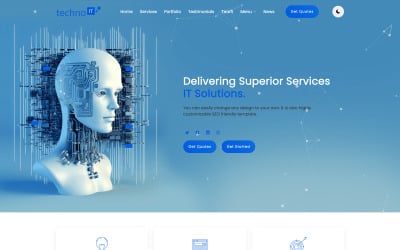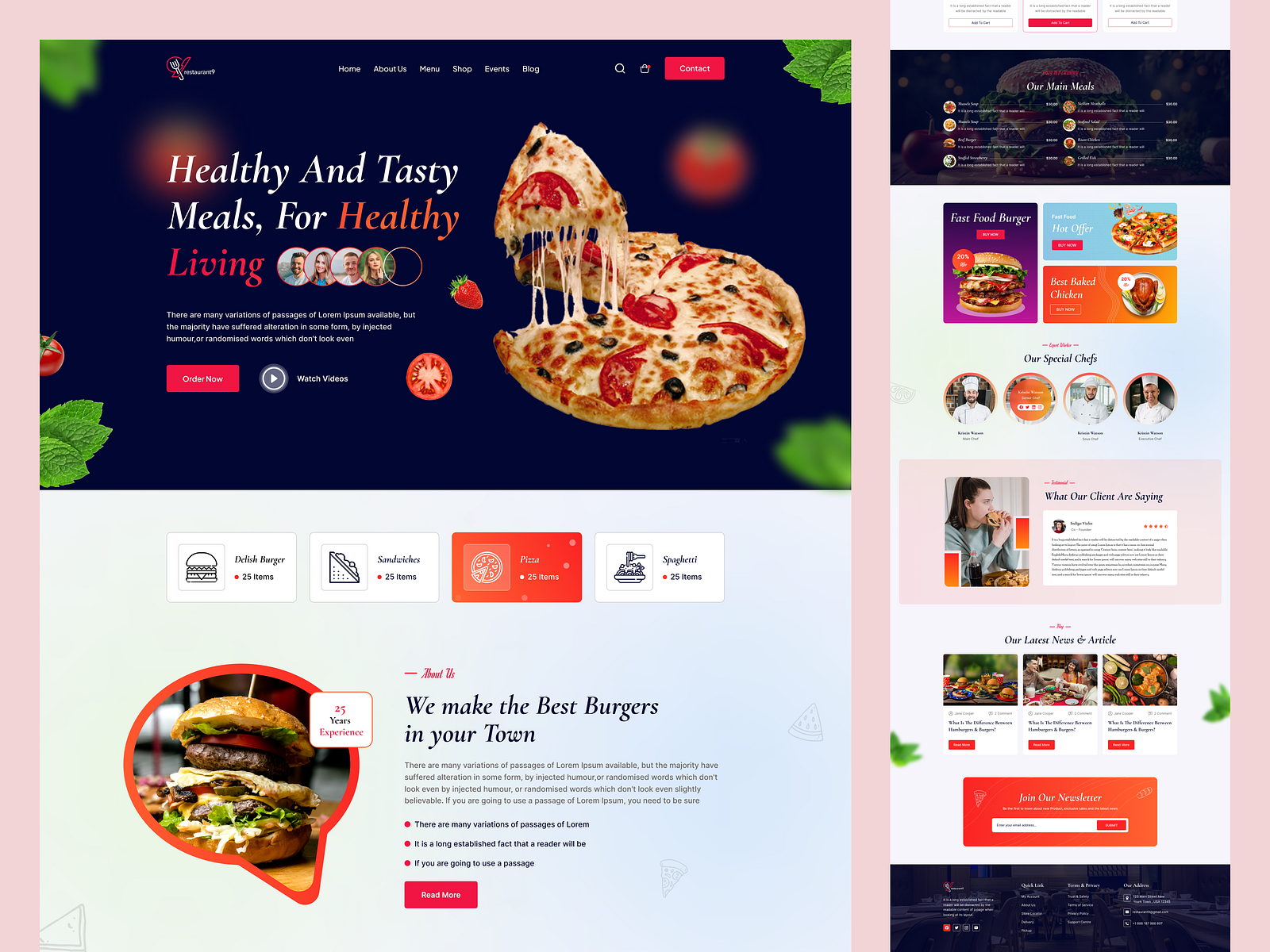The Role of User-Centered Website Design in Increasing Customer Retention
The Role of User-Centered Website Design in Increasing Customer Retention
Blog Article
The Ultimate Guide to Modern Website Design Trends
In the ever-evolving electronic landscape, modern-day internet site design patterns play a vital function in shaping individual experience and engagement. From the rise of minimal layout principles that prioritize simpleness to the effect of strong typography in defining brand identity, each aspect contributes to a cohesive online existence. The emphasis on receptive and mobile-first techniques, along with innovative microinteractions, better enhances functionality. Furthermore, the expanding emphasis on sustainable web design techniques reflects a dedication to ecological duty. These fads jointly increase important concerns concerning the future of effective web layout and what it means for companies and customers alike.
Minimalist Design Concepts
Minimalist layout concepts emphasize the idea that less is extra, promoting for simplicity and performance in aesthetic interaction. This approach remove unneeded components, focusing instead on crucial elements that share the intended message properly. By prioritizing clarity, minimalist style boosts customer experience, permitting site visitors to navigate websites easily.
Core tenets of minimalist layout include making use of sufficient white space, which develops a sense of equilibrium and company. This unfavorable space not just directs the visitor's focus to crucial elements however likewise promotes a soothing visual environment. In addition, a limited shade combination is usually utilized, using soft shades or monochromatic plans to preserve visual communication and protect against frustrating the customer.
Typography plays a vital function in minimal design, where readable typefaces are picked for their simpleness and efficiency in interacting material. Inevitably, minimal design principles grow a concentrated atmosphere that encourages customers to involve with the material, enhancing the total efficiency of contemporary website design.
Strong Typography Choices
Welcoming vibrant typography choices has actually come to be a defining characteristic of modern internet site style, as it successfully captures focus and shares solid messaging. Designers are progressively utilizing typography not simply as a functional aspect however as an essential visual component that boosts the general aesthetic and user experience.

Furthermore, the association of strong typography with minimal layout concepts permits striking contrasts, enhancing readability while keeping aesthetic appeal. Making use of whitespace around bold message better stresses its significance, making certain that the message reverberates with the target market.
As digital landscapes come to be a lot more competitive, leveraging vibrant typography enables brand names to differentiate themselves and leave a long lasting perception. The mindful option of font styles and their application can stimulate emotions, develop tone, and drive action, making strong typography an essential device in modern-day website layout. Ultimately, it is an effective means to boost storytelling and ensure that crucial messages are not just seen yet likewise really felt.
Mobile-first and responsive Layout
Mobile-first and receptive design has actually become a vital concept in modern website development, reflecting the enhancing reliance on smart phones for accessing on the internet material. As individual behavior changes towards mobile surfing, designers must focus on creating experiences that adjust perfectly across numerous screen sizes and resolutions.
A receptive layout makes sure that a web site automatically readjusts its design, pictures, and performance based on the tool being used. This method improves customer experience by offering constant navigation and readability, regardless of whether the site visitor gets on a tablet computer, smartphone, or desktop computer computer system. Moreover, mobile-first layout supporters for developing websites originally for smaller sized screens, ultimately scaling as much as bigger screens. This approach motivates a more reliable and streamlined style procedure, concentrating on essential web content and functionality first.
Executing mobile-first and receptive principles not just satisfies customer preferences yet also straightens with seo (SEARCH ENGINE OPTIMIZATION) techniques. Major online search engine, like Google, prioritize mobile-friendly internet sites in their positions, making it crucial for organizations to embrace these layout methods. In a competitive digital landscape, welcoming mobile-first and receptive design is not just a choice; it is necessary for guaranteeing access and interaction with a varied audience.
Involving Microinteractions
Microinteractions play a crucial duty in improving customer involvement and general website experience, particularly in the context of responsive and mobile-first layout. These subtle style elements offer instant responses to customers, making communications a lot more instinctive and satisfying. Examples include switch computer animations, notice alerts, and filling indicators, which not only guide individuals however additionally produce a sense of link with the user interface.
Including interesting microinteractions can considerably improve functionality by minimizing cognitive load. When customers receive aesthetic or acoustic feedback upon doing activities, Check This Out such as clicking a switch or submitting a type, they really feel much more positive in their selections. This promotes a smoother navigating experience, eventually raising customer retention.

As website design fads remain to advance, the relevance of microinteractions can not be overstated. They function as the refined yet powerful touchpoints that transform common interactions right into extraordinary experiences, thereby raising the total effectiveness of modern internet style.
Sustainable Website Design Practices
Sustainable website design practices are coming to be increasingly important as the digital landscape expands and environmental issues increase. Developers and developers are recognizing their responsibility to develop web sites that not only serve individual needs however likewise reduce environmental impact. This method includes a number of crucial approaches.
To start with, enhancing energy usage is critical. Websites should be made to fill swiftly and efficiently, which minimizes server energy use and enhances customer experience. Techniques such as photo compression, reducing HTTP demands, and using contemporary coding techniques contribute substantially to this objective.
Secondly, selecting environment-friendly organizing service providers is critical - website design. Numerous organizing firms are currently powered by renewable resource resources, enabling websites to run in a more lasting manner. This selection shows a commitment to decreasing carbon footprints
In addition, adopting a minimal style can improve sustainability. Fewer aspects on a web page lead to much less information transfer, which not just speeds up filling times however likewise conserves sources.
Lastly, promoting digital access makes certain that websites reach a broader target market without unneeded bloat, aligning individual experience with environmental responsibility. By integrating these lasting methods, web designers can add positively to both individual engagement and the world's wellness.
Final Thought
In recap, modern site style patterns highlight the assimilation of find more minimal principles, bold typography, and responsive style to boost individual experience. Embracing these fads is vital for developing impactful electronic experiences that resonate with users in an increasingly affordable online landscape.
In the ever-evolving electronic landscape, modern internet site style trends play a critical role in forming user company website experience and involvement. By prioritizing quality, minimal layout enhances individual experience, allowing site visitors to navigate websites easily.
Eventually, minimal style concepts cultivate a focused setting that encourages users to engage with the material, improving the overall efficiency of modern-day website style.Microinteractions play a pivotal function in improving user engagement and total site experience, especially in the context of responsive and mobile-first layout.In summary, contemporary website design fads stress the assimilation of minimal principles, bold typography, and responsive layout to boost customer experience.
Report this page